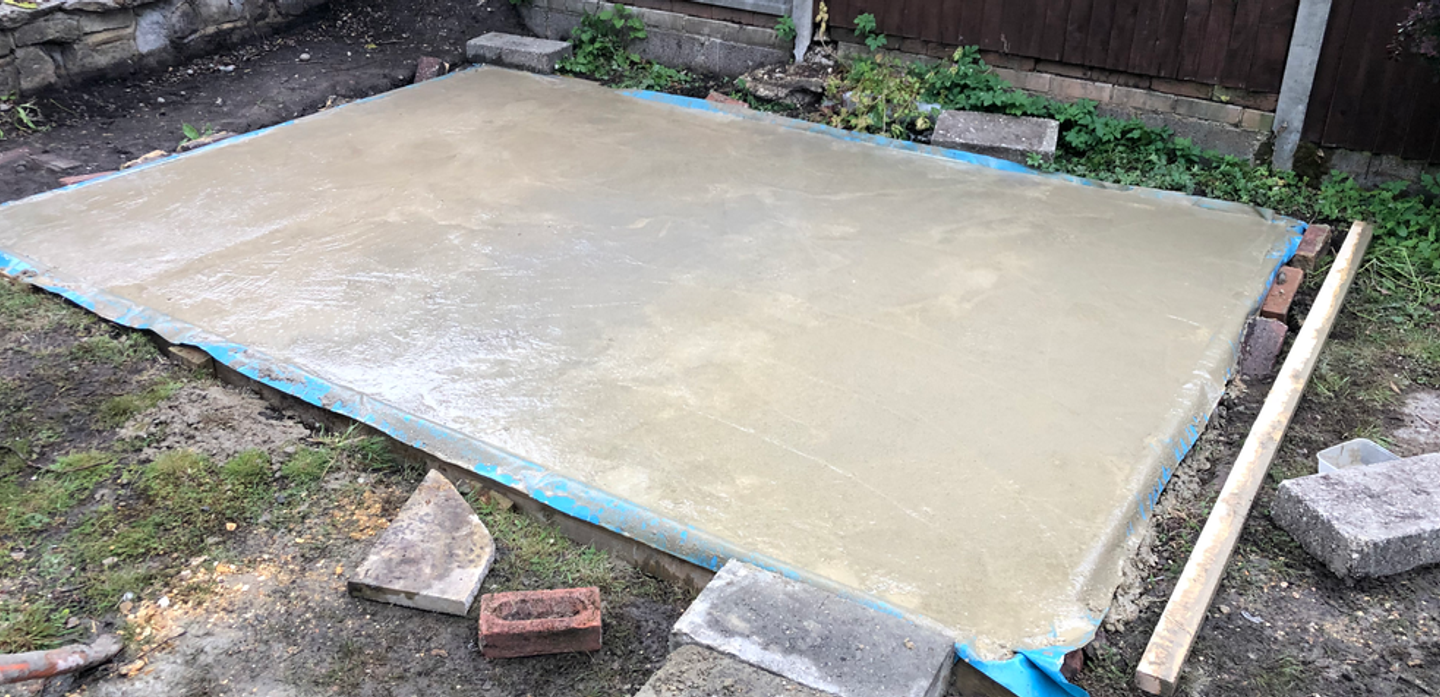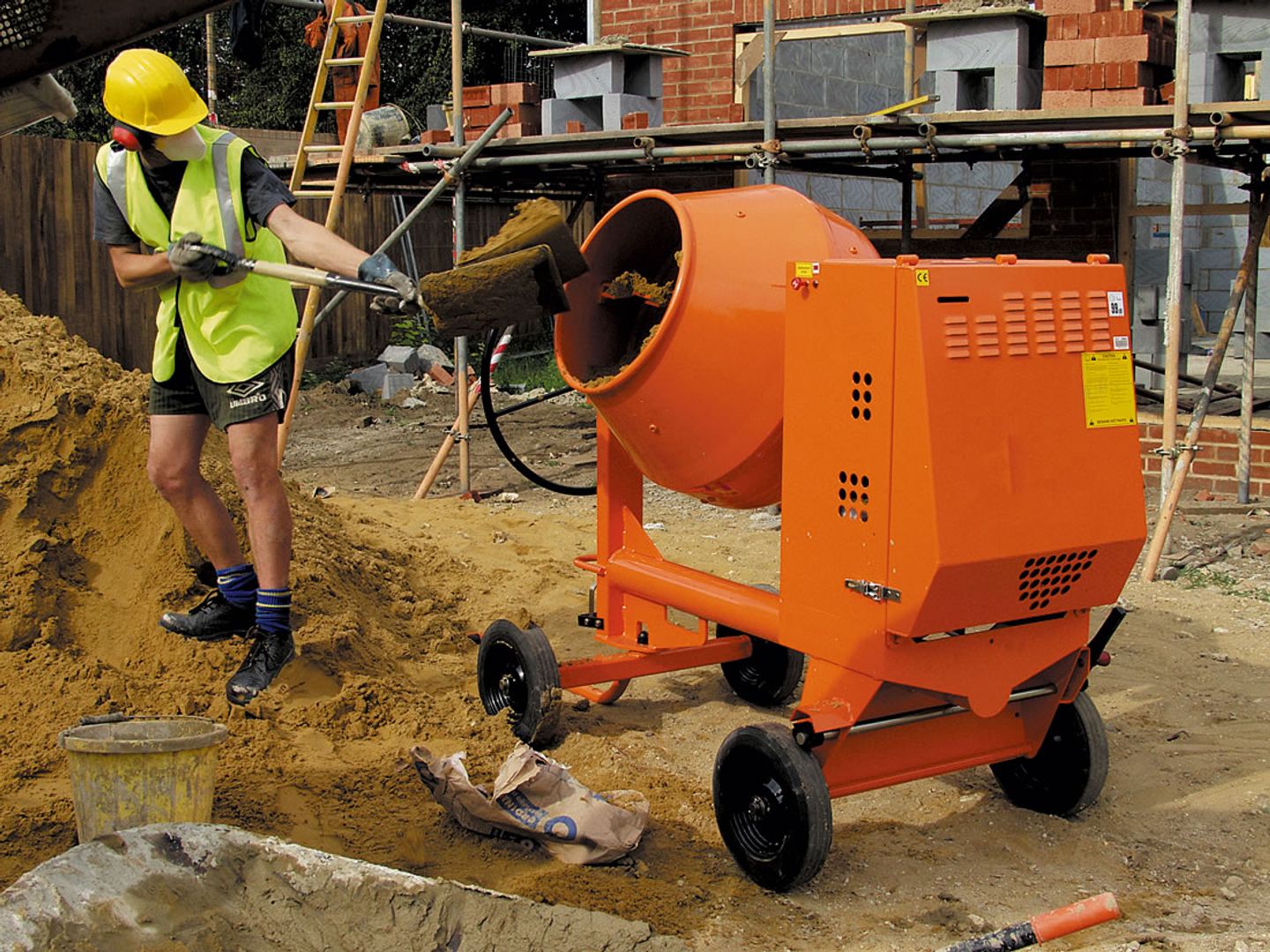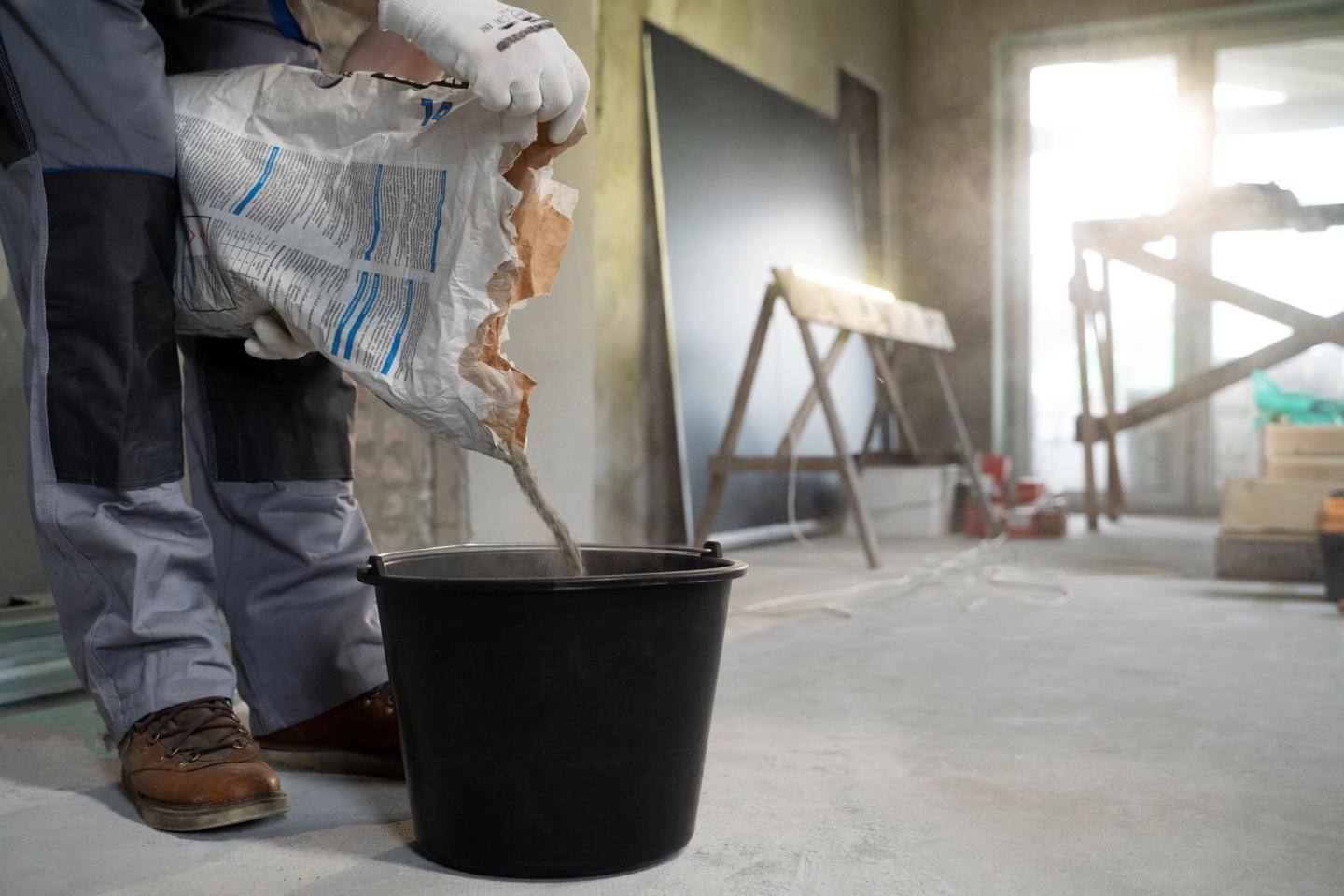Knowing how to mix concrete correctly is a useful skill.
It allow you to complete a wide range of projects around the garden or inside the home, from securing patio slabs to building a shed base.
If you want to make your own concrete, there are a few things you will need to think about first:
- What safety gear do I need to wear when making concrete?
- What materials do I need to make concrete?
- What am I going to be using the concrete mix for?
- How much concrete am I going to need?
- Will I be mixing the concrete by hand, or will I be better using a concrete mixer?
In this guide we will talk you through the above to help you be in the know about how to make your own concrete.
1. What safety gear do I need to wear when making concrete?
Cement dust can be harmful to work with if you inhale or it gets into contact with your skin. When you're ready to make the concrete, you'll need the following equipment to ensure your safety as well as a successful mix:
- Mask or mouth protector
- Safety goggles or eye protectors
- Safety gloves
- Builders bucket or mixing board (if mixing by hand)
- Wheelbarrow, trolley or trug
- Spade or builders shovel
- Plastic bucket or jug for water
You will also need to consider how and where you are going to be mixing up the concrete.
Investing in a large tarpaulin sheet will minimise the mess in your house or garden from any splashes in the area you will be making the mix.
2. What materials do I need to make concrete?
Concrete is made up from a mix of cement, sand (fine aggregate), and stone (coarse aggregate). Each material has it's own important purpose when creating concrete.
The cement fills the gaps between the other materials and acts as the binding agent. The sand acts as a bulking agent adding stability and the stone is the major bulk of the mix that adds strength to the concrete.
To bind these materials together, you'll need to add water as it adds a fluidity to the mix before it sets.
2. What am I going to be using the concrete mix for?
The ratio and type of materials you need to make concrete will depend on the sort of project you are taking on.
If you are using it to lay a foundation for a garden wall, it will need to be a different mix to if you are using it to secure fence posts.
Getting the ratio right will make sure your concrete is strong enough for the job it is intended for.
Get the ratio wrong and you could be looking at a costly, time-consuming mistake to fix.
Ready mixed concrete bags, where all you need to do is add water, are ideal for smaller jobs or for when you want to save time. They can work out to be more expensive if you have a large area to cover, however they will ensure the mix is always consistent.
Take a look at The Global Cement and Concrete Association's page for further information on concrete, its uses & discover the many benefits of using concrete sustainability and safety.

Below are some guidelines for ratio mixes if you are looking to combine your own concrete.
Concrete and mortar mix ratios:
When we refer to “sand”, this is sharp sand and “stone” should be a 10-20mm aggregate.
"Part” means an equal amount of the material using whatever piece of equipment used to measure it. For example a shovel or a bucket. As long as the same item is used each time, the volumes are measured in the same way.
General Purpose Concrete 1:2:3 Mix
A basic, general purpose concrete mix in the UK is made up of a 1:2:3 ratio with 1 part cement, 2 parts sand and 3 parts stone. This is a medium concrete that can be used for repairs or building garden planters
Foundation Concrete 1:2½:3½ Mix
For garden wall foundations or shed bases you will need a 1:2½:3½ mix with 1 part cement, 2½ parts sand, and 3½ parts stone
Paving Concrete 1:1½:2½ Mix
For building steps, pathways, or garage floors where there will be regular footfall a stronger concrete is required with a mix ratio of 1:1½:2½ with 1 part cement, 1½ parts sand, and 2½ parts stone
If you are looking to make a gluing agent for bricklaying or render this is called mortar rather than concrete, although it consists of the same ingredients, minus the stone.
External Wall Mortar Mix
For external brickwork it is a ratio of 1:4 with 1 part cement to 4 parts sand
Sheltered Mortar Mix
For sheltered brickwork it is a ratio of 1:3 with 1 part cement to 3 parts sand
You may want to consider adding a small amount of lime or plasticiser to the mortar to make it easier to work with.
3. How much concrete am I going to need?
You will need to plan this out to work out how much of the different materials you will need to buy.
If you are creating a fairly straightforward flat shape such as a shed base, you can use this method to calculate the cubic feet required:
- Multiply the length and the width of the area you want to cover – this will give you the square footage
- Determine how thick you want the concrete to be and convert this from inches to feet
- Multiply the thickness in feet by the square footage to determine the cubic feet
If the shape is a little more complex, you may want to search for an online calculator to work out the quantities required.
A ready-mix bag will tell you the cubic feet coverage it can provide, although it is always a good idea to go for a little more than you require just in case.
4. Will I be mixing the concrete by hand, or will I be better using a concrete mixer?
Mixing by hand can be a real chore. It requires time, effort and may even result in an uneven blend.
However, if you only require a small amount of concrete, you may choose to make your concrete by hand especially if using a ready-mix bag.
To achieve a reliable compound, using a concrete mixer will save a lot of time and labour.
Take a look at our guide to concrete mixers to help you decide what type of mixer you need for your project and how to use it.

If you want to make the mix by hand, consistency is key.
Step 1 – Ensure you are wearing the appropriate safety gear before you start.
Step 2 – Lay out your tarpaulin sheet or something similar, then place your mixing board or builders' buckets on top.
Step 3 – Measure out your dry materials ensuring you use the same measuring tool, then pour the sand and aggregate onto the board.
Step 4 – Use a shovel to thoroughly mix the materials together, folding them over. When the colour looks even, add in the cement and mix again. Once completely mixed, make a well in the centre ready to add the water
Step 5 – Add the water little by little and work it in from the edges working inwards. You are looking for a smooth consistency here. You will be working to add roughly 27.5 litres of water to every 50 kg bag of cement. To check if the mix is ready use your spade or shovel to draw ridges on the surface – if the mix holds its shape and isn't dry or crumbly it is ready to use.
Now that you have made your mix, you're ready to use the concrete for your project!
Ideally you should be mixing and using concrete in warm, dry conditions.
If it is too hot, too cold or too wet, the concrete may set with a weak resistance.
You shouldn't lay concrete if the temperature is going to fall below 4°C so try to plan ahead before you make a start.
With our tips & tricks, you'll be making concrete as good as a pro
And just like that, you've made your own concrete.
The thought of doing it yourself may seem daunting but it really doesn't need to be.
As long as you have the right safety wear & you follow each step correctly, you'll be able how to make concrete for future projects.
If you need any materials, tools or equipment to make concrete, visit our HSS DIY website.






















































